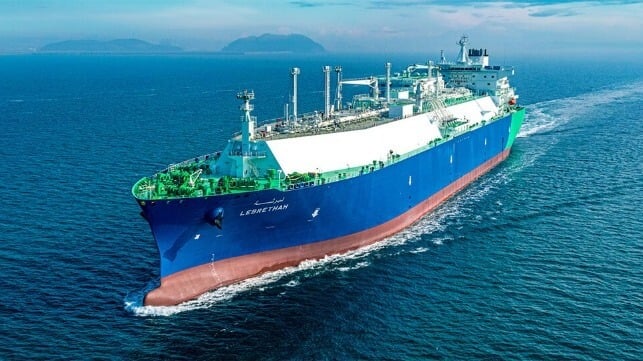Hanwha Markets Building LNG Carriers in Pennsylvania to Meet USTR Rules

South Korea’s Hanwha Ocean is reported to be looking to leverage its long expertise in LNG carriers and its unique position through the ownership of a shipyard in Pennsylvania in response to the new U.S. Trade Representative’s fees for Chinese-built ships. Bloomberg quotes an executive from Hanwha highlighting its unique capabilities and the pending need for the first modern U.S.-built LNG carriers.
While much of the attention on the USTR fee structure released last week has been on the aspects of Chinese-build ships, Chinese vessel operators, and the foreign companies operating Chinese-built ships, another key provision of the fee structure picks up an idea that had been circulating in Washington D.C. for years to require a portion of LNG exports to leave the U.S. on U.S.-built and operated vessels.
The U.S. emerged as the leading exporter of LNG in the past few years rivaling Qatar and Australia, in part driven by Europe’s need to replace Russian supplies of gas. The Trump administration has promised to accelerate the LNG market and already moved to license new projects and terminals.
“To incentivize U.S.-built liquified natural gas (LNG) vessels, limited restrictions on transporting LNG via foreign vessels,” proposed USTR outlining its fee structure. “These restrictions will increase incrementally over 22 years,” notes the announcement.
USTR calls for introducing a requirement starting April 2029 that one percent of U.S. LNG exports must travel on U.S.-flagged and U.S.-operated vessels. Starting in 2031, it would step up to two percent, reaching seven percent by the 2040s, and ultimately 15 percent in 2047. USTR says it may direct the suspension of LNG export licenses if the percentages are not met.
The requirement for U.S. vessels calls for vessels built in the U.S. where all the major components of the hull or superstructure are manufactured in the U.S. as well as key components in propulsion, cargo handling, and alike. Many in the industry have called the USTR requirement unrealistic noting the lack of commercial shipbuilding capacity in the U.S. and the lack of experience specifically with LNG carriers.
Bloomberg is quoting Ryan Lynch, vice president of commercial shipping at Hanwha Shipping who says “as many as five to seven US-flagged, US-operated LNG carriers would be required before the end of the decade.”
South Korea’s Hanwha Group entered the shipbuilding sector in 2023 when it acquired control of Daewoo Shipbuilding & Marine Engineering (DSME) in an agreement with the South Korean government-controlled banks. Then in December 2024, it completed its $100 million acquisition of Philly Shipyard, highlighting its role in building commercial U.S. Jones Act ships as well as its work for MARAD.
Earlier this year, building on DSME’s legacy, Hanwha Ocean highlighted it had become the first shipbuilder to deliver 200 LNG carriers. The vessel was the Lebrethah, built by the company for SK Shipping, and which will be deployed and operated in Qatar Energy’s North Field Expansion Project.

that matters most
Get the latest maritime news delivered to your inbox daily.
The company reports it made history in 1995 by successfully delivering its first LNG carrier and 21 years later, in 2016, delivered its 100th LNG carrier. Over the next nine years, it built another 100 LNG carriers claiming a 57 percent market share. It noted that between 2022 and 2024 it received orders for 31 ships for the second Qatar project.
Hanwha, according to Bloomberg, is now positioning itself to share the Korean expertise with its Philly Shipyard. As such, it could become the first to build a modern U.S. LNG carrier.
